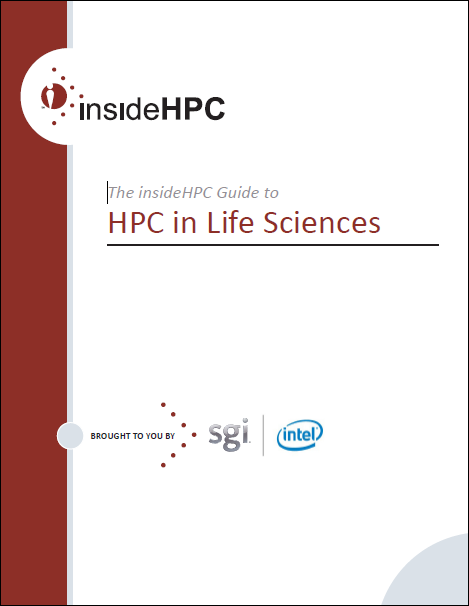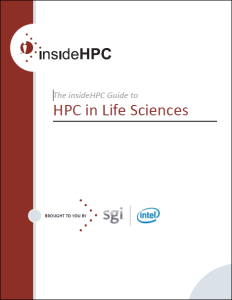The SGI UV system is uniquely suited for bioinformatics and genomics by providing the computational capabilities and global shared memory architecture needed for even the most demanding sequencing and analytic tasks, including post sequencing and other data intensive workflows.
This is the final article is an 6 article series on the trends and technologies impacting the application of HPC in Life Sciences.
The key benefits of the SGI UV 2000 architecture include:
- Massive In-Core Computation –The SGI UV 2000 allows much larger and more detailed models and simulations of physical systems, or any large data set, to be entirely memory resident.
- Massively Memory Mapped I/O – For applications that are bound by random I/O accesses on large data sets, the SGI UV with the Intel Xeon processor E5-4600 product family offers up to a 1,000x performance increase by enabling entire datasets to be brought into main memory.
- Highly Efficient Application Scaling and Message Passing – SGI UV uses an array of advanced hardware and software features to offload thread synchronization, data sharing and message passing overhead from CPUs accelerating critical tasks by up to 100x.
- Greatly Simplified Application Load Balancing – In cluster computing environments, each node completes its own threads and then waits until all other nodes complete their assigned tasks. The global shared memory available with the SGI UV with the Intel Xeon processor E5-4600 product family allows processors that finish early to also work on other threads, since each processor has access to all data and synchronization points through globally shared memory.
- Smooth Scaling of Application Size and Complexity – In most cluster environments, applications run on a fixed number of nodes, each with a fixed amount of CPU cores and memory. Applications run into a “wall” when they exceed the fixed amount of memory per core or node in the cluster. Applications running on an SGI UV scale smoothly by drawing on additional memory distributed throughout the system.
- Petascale System and Application Scalability – In addition to global shared memory support where all resources are shared by a single copy of the operating system, SGI UV provides an even larger Globally Addressable Memory (GAM) which enables systems to be built that extend beyond the shared memory reach of any given processor or OS implementation.
You can read the complete article series online here. If you prefer you can click here to download the insideHPC Guide to HPC in Life Sciences in a PDF courtesy of SGI and Intel.





